
ACS Applied Nano Materials
Scope & Guideline
Driving Progress in Nanomaterials for Everyday Impact.
Introduction
Aims and Scopes
- Nanomaterials Synthesis and Characterization:
The journal features studies on various synthesis methods for nanomaterials, including chemical vapor deposition, sol-gel processes, and electrospinning, along with detailed characterization techniques such as electron microscopy and spectroscopy. - Nanomaterials in Energy Applications:
Research on the use of nanomaterials for energy conversion and storage, including batteries, supercapacitors, and photocatalysts, is a core focus, highlighting their potential to enhance efficiency and performance. - Biomedical Applications of Nanomaterials:
The journal publishes articles on the development of nanomaterials for drug delivery, imaging, and therapeutic applications, particularly in cancer treatment and regenerative medicine. - Environmental Applications:
Studies addressing the use of nanomaterials for environmental remediation, pollutant detection, and sustainable practices are prevalent, showcasing their role in addressing global challenges. - Multifunctional Nanocomposites:
The journal explores the integration of nanomaterials into composite structures to enhance properties such as mechanical strength, thermal conductivity, and electromagnetic shielding. - Theoretical and Computational Approaches:
Research employing computational modeling and theoretical studies to predict the behavior of nanomaterials and optimize their properties for specific applications is also highlighted.
Trending and Emerging
- Smart and Responsive Nanomaterials:
The development of smart nanomaterials that respond to environmental stimuli, such as pH, temperature, and light, is gaining significant attention, facilitating applications in drug delivery and sensors. - Sustainable Nanotechnology:
Research focusing on green synthesis methods, biodegradable nanomaterials, and environmentally friendly applications is on the rise, reflecting a global push towards sustainability. - Integration of AI and Machine Learning:
The incorporation of artificial intelligence and machine learning techniques to predict material properties, optimize synthesis processes, and enhance application performance is an emerging trend. - Nanomaterials for Energy Harvesting:
There is an increasing focus on using nanomaterials for energy harvesting applications, including piezoelectric and thermoelectric systems, driven by the need for renewable energy solutions. - Hybrid Nanostructures:
Research on hybrid nanostructures that combine different materials to achieve enhanced functionalities is trending, particularly in areas like catalysis, sensing, and energy storage. - Biomedical Engineering and Regenerative Medicine:
The application of nanomaterials in biomedical engineering, particularly for regenerative medicine and targeted therapies, is expanding rapidly, with significant implications for healthcare.
Declining or Waning
- Traditional Nanomaterial Applications:
Research focusing solely on traditional applications of nanomaterials, such as basic electronics and conventional sensors, is decreasing as more innovative and multifunctional approaches gain traction. - Conventional Photocatalysis Studies:
There is a noticeable decline in studies centered on basic photocatalytic processes without novel enhancements or hybrid systems, as the field shifts towards more complex systems and synergies. - Passive Nanomaterials:
Publications focusing on passive nanomaterials without active functionalities or interactions are becoming less frequent, as the trend moves towards more dynamic and responsive materials. - Single-Use Applications:
Research on single-use nanomaterials with limited applications is declining in favor of sustainable, multifunctional materials that can be reused or recycled. - Basic Toxicity Studies:
While safety is still critical, there is a shift away from basic toxicity studies towards more integrated approaches that consider the lifecycle and environmental impact of nanomaterials.
Similar Journals
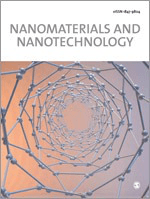
Nanomaterials and Nanotechnology
Transforming Knowledge into Nanotech SolutionsNanomaterials and Nanotechnology is a premier journal published by HINDAWI LTD, dedicated to advancing knowledge in the rapidly evolving fields of nanomaterials and nanoscale applications. Established as an Open Access platform since 2011, the journal aims to disseminate high-quality research that provides insights into nanotechnology's manifold aspects, including biotechnology, ceramics and composites, as well as electrical and electronic engineering. With a compelling impact factor reflected in its robust Scopus rankings—placing it in the 80th percentile in Engineering and the 72nd percentile in Biotechnology—it stands as a key resource for researchers, professionals, and students seeking to stay at the forefront of innovation in materials science. The journal occupies a distinguished position in the academic community, featuring studies that explore the synthesis, characterization, and application of nanomaterials, thereby contributing significantly to scientific discourse and technological advancement in this critical area.
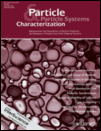
PARTICLE & PARTICLE SYSTEMS CHARACTERIZATION
Elevating Standards in Particle CharacterizationPARTICLE & PARTICLE SYSTEMS CHARACTERIZATION is a distinguished journal dedicated to advancing the knowledge within the fields of Chemistry, Condensed Matter Physics, and Materials Science. Published by WILEY-V C H VERLAG GMBH in Germany, this journal has established a solid reputation since its inception in 1984, showcasing research aimed at understanding the intricate properties and behaviors of particulate systems. With an impressive Q2 ranking in its respective categories and Scopus ranks indicating a robust standing in the global research community, it serves as an essential resource for researchers, professionals, and students. Although it does not currently offer Open Access options, its comprehensive articles and reviews provide valuable insights that contribute significantly to the ongoing discourse in these scientific domains. As it prepares to celebrate four decades of publication, PARTICLE & PARTICLE SYSTEMS CHARACTERIZATION continues to provide a vital platform for emerging knowledge, fostering innovation and collaboration among scientists dedicated to the study of particle systems.
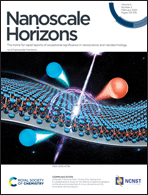
Nanoscale Horizons
Exploring the Future of Nanoscale MaterialsNanoscale Horizons is an esteemed journal published by the Royal Society of Chemistry, focusing on cutting-edge research in the field of nanoscale materials and their applications. Established in 2016, this journal quickly gained prominence, achieving a Q1 ranking in Materials Science (miscellaneous) and a notable rank of #32 out of 463 in the Scopus index, placing it in the 93rd percentile among its peers. With its rigorous peer-review process and commitment to disseminating high-impact research, Nanoscale Horizons serves as a vital platform for sharing innovative discoveries and interdisciplinary advancements. Researchers and professionals are invited to explore the exciting developments in nanotechnology through this publication, fostering collaboration and knowledge exchange in an ever-evolving field. Though currently not open access, the journal ensures that significant research findings are made available to a diverse audience keen on advancing materials science.

Energy & Environmental Materials
Bridging Science and SustainabilityEnergy & Environmental Materials, published by WILEY, is an esteemed academic journal dedicated to pioneering research in the multifaceted domains of energy, environmental science, and materials science. Since its inception in 2018, this journal has rapidly established itself as a leading platform, holding a prestigious Q1 ranking across multiple categories including Renewable Energy, Sustainability, and Waste Management, reflecting its significant contributions to advancing knowledge in these critical areas. With a robust Scopus ranking that positions it in the top percentile for Environmental Science and Materials Science, it caters to a diverse audience of researchers, professionals, and students seeking cutting-edge findings and practical applications in energy efficiency and sustainable materials. This open-access journal facilitates the dissemination of innovative research and aims to bridge the gap between scientific exploration and real-world solutions for a sustainable future. The editorial team encourages submissions that explore both theoretical and practical aspects, ensuring that every publication not only contributes to the academic landscape but also drives impactful change in energy and environmental practices.
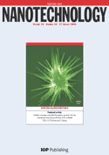
NANOTECHNOLOGY
Bridging Disciplines for Tomorrow's Technologies.NANOTECHNOLOGY is a premier academic journal published by IOP Publishing Ltd, focusing on cutting-edge advancements in the interdisciplinary field of nanoscience and nanotechnology. With a strong emphasis on research that bridges biology, chemistry, engineering, and materials science, this journal presents high-quality, peer-reviewed articles that cater to the diverse interests of researchers, professionals, and students alike. NANOTECHNOLOGY boasts an impressive ISSN: 0957-4484 and E-ISSN: 1361-6528, and holds a notable position within Scopus, ranked in the second quartile (Q2) across multiple categories including Bioengineering and Mechanical Engineering, underscoring its vital role in advancing the field. The journal's impact is further highlighted by its robust rankings, making it essential reading for those looking to stay at the forefront of nanotechnology research. Commencing in 1990 and with publication extending through to 2024, NANOTECHNOLOGY provides a unique platform for disseminating significant findings and innovative methodologies while fostering collaborations across various scientific disciplines. In a rapidly evolving technological landscape, this journal not only enhances academic discourse but also contributes to the practical applications of nanotechnology in real-world scenarios.
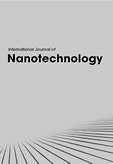
International Journal of Nanotechnology
Elevating Nanotechnology Research to New HeightsInternational Journal of Nanotechnology, published by INDERSCIENCE ENTERPRISES LTD, is a prominent academic platform dedicated to advancing research in the rapidly evolving field of nanotechnology. With an ISSN of 1475-7435 and an E-ISSN of 1741-8151, this journal has been contributing valuable insights and innovative findings since its inception in 2004. Although currently not an open-access publication, it serves as an essential resource for researchers, professionals, and students alike, encompassing critical areas such as bioengineering, condensed matter physics, and materials science. The journal is indexed in Scopus, highlighting its academic rigor, albeit ranking in the lower quartiles across several categories. As it progresses towards its 2024 milestone, the International Journal of Nanotechnology continues to play a crucial role in fostering collaborative scientific discourse and pushing the boundaries of knowledge in nanoscience. With a distinguished reputation in the United Kingdom and beyond, it is a vital tool for anyone looking to stay at the forefront of nanotechnology advancements.

Journal of Nanoanalysis
Transforming Research into Practical Nanotechnology SolutionsThe Journal of Nanoanalysis is a leading publication in the field of nanotechnology, dedicated to advancing the understanding and application of nanoscale analysis methodologies. Published by BORNA SANJESH KIMIA CO-BSK CO, this journal aims to provide a comprehensive platform for researchers, professionals, and students to disseminate cutting-edge findings and innovative approaches in nanomaterials characterization, nanoelectronics, and related areas. With a focus on high-quality peer-reviewed articles, the journal supports the global scientific community in fostering interdisciplinary collaboration and knowledge sharing. Although currently lacking an explicit impact factor, the Journal of Nanoanalysis is poised to make significant contributions to the field, with its commitment to open access and accessibility globally enriching the pool of research available for academic and practical advancements.
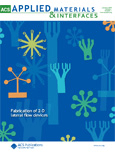
ACS Applied Materials & Interfaces
Transforming Research into Real-World ApplicationsACS Applied Materials & Interfaces, published by the American Chemical Society, stands as a leading journal in the field of applied materials, nanotechnology, and interdisciplinary research in medicine. With an impressive Impact Factor that places it in the Q1 category across Materials Science, Medicine, and Nanoscience and Nanotechnology, this journal consistently ranks among the top tier, evidencing its significance and influence in advancing scientific knowledge. The journal’s scopus ranking of 33 out of 463 in General Materials Science further underscores its critical role in disseminating innovative and high-quality research. Although it is not an open-access journal, a diverse range of access options is available, ensuring that vital research findings are accessible to a broad audience of researchers, professionals, and students. Targeting breakthroughs in the synthesis, characterization, and application of materials and interfaces, ACS Applied Materials & Interfaces serves as a pivotal platform for publishing cutting-edge studies essential for future technological advancements.

Digest Journal of Nanomaterials and Biostructures
Pioneering Discoveries in Nanomaterials and Biomedical EngineeringThe Digest Journal of Nanomaterials and Biostructures, published by VIRTUAL CO PHYSICS SRL, is a premier open-access journal since 2006, focusing on the dynamic intersections of nanotechnology, biostructures, and material science. Based in Romania, this journal caters to a diverse readership of researchers, professionals, and students in fields such as nanoscience, biomedical engineering, and condensed matter physics. Despite its current Q4 ranking in multiple categories, including Atomic and Molecular Physics and Structural Biology, the journal serves as a valuable platform for disseminating innovative research and fostering collaboration across scientific disciplines. The journal’s commitment to open access ensures that groundbreaking findings in nanomaterials are readily available to a global audience, reflecting the increasing importance of interdisciplinary research in addressing contemporary challenges. With its ongoing evolution and the potential for high-impact contributions to the scientific community, Digest Journal of Nanomaterials and Biostructures plays a crucial role in advancing knowledge and innovation in its respective fields.

NPG Asia Materials
Advancing the Frontiers of Materials ScienceNPG Asia Materials, a premier journal published by NATURE PORTFOLIO, stands at the forefront of research in the fields of condensed matter physics, materials science, and modeling and simulation. With an impressive Impact Factor gracing its Q1 rankings in 2023, this open-access journal, established in 2012, offers a vital platform for disseminating high-quality research articles, reviews, and perspectives that advance the understanding of material properties and innovative applications. Based in the United States and catering to a global audience, NPG Asia Materials features cutting-edge contributions that not only enhance academic scholarship but also provoke discussions relevant to both industry and academia. Researchers, professionals, and students are invited to explore its extensive archive of work, covering insights from 2009 to 2024, in a bid to stay abreast of the latest developments in these rapidly evolving scientific domains.